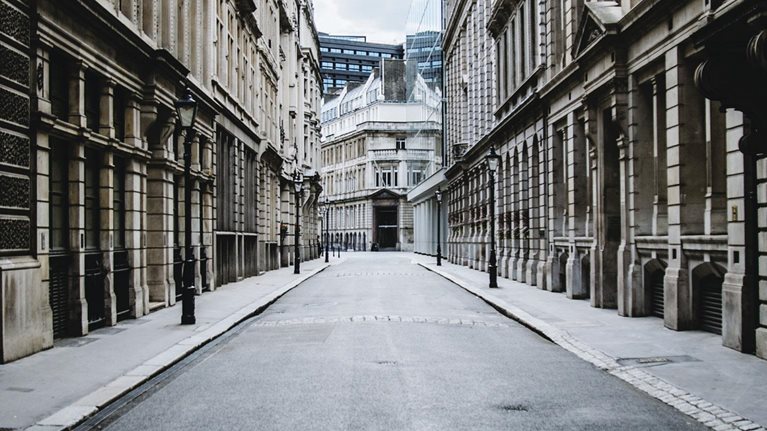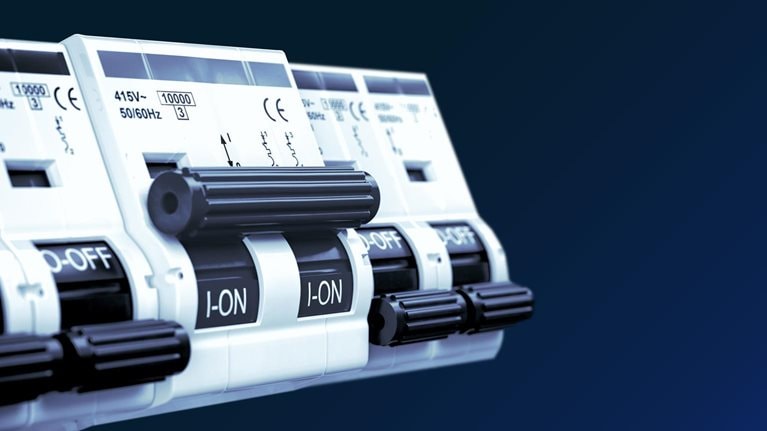The COVID-19 pandemic is the defining global health crisis of our time and the greatest global humanitarian challenge the world has faced since World War II. The virus has spread widely, and the number of cases is rising daily as governments work to slow its spread. India has moved quickly, implementing a proactive, nationwide, 21-day lockdown, with the goal of flattening the curve and using the time to plan and resource responses adequately.
Along with an unprecedented human toll, COVID-19 has triggered a deep economic crisis. The global economic impact could be broader than any that we have seen since the Great Depression.1 To understand the probable economic outcomes and possible interventions, McKinsey spoke with more than 600 leaders, including senior economists, financial-market experts, and policy makers, in 100 companies across multiple sectors. Based on these inputs, we modeled estimates for three economic scenarios in India (Exhibit 1).2

In scenario 1, the economy could contract by about 10 percent in the first quarter of fiscal year 2021, with GDP growth of 1 to 2 percent in fiscal year 2021. In this scenario, the lockdown would be relaxed after April 15, 2020 (when the 21-day deadline is due to expire), with appropriate protocols put in place for the movement of goods and people after that. Our economic modeling suggests that even in this scenario of relatively quick rebound, the livelihoods of eight million workers, including many who are in the informal workforce, could be affected. In other words, eight million people could have their ability to subsist and afford basic necessities, such as food, housing, and clothing, put at severe risk. And with corporate and micro-, small-, and medium-size-enterprise (MSME) failure, nonperforming loans (NPLs) in the financial system could rise by three to four percentage points of loans. The amount of government spending required to protect and revive households, companies, and lenders could therefore be in the region of 6 lakh crore Indian rupees (around $79 billion), or 3 percent of GDP.
In scenario 2, the economy could contract sharply by around 20 percent in the first quarter of fiscal year 2021, with –2 to –3 percent growth for fiscal year 2021. Here, the lockdown would continue in roughly its current form until mid-May 2020, followed by a very gradual restarting of supply chains. This could put 32 million livelihoods at risk and swell NPLs by seven percentage points. The cost of stabilizing and protecting households, companies, and lenders could exceed 10 lakh crore Indian rupees (exceeding $130 billion), or more than 5 percent of GDP.
Scenario 3 could mean an even deeper economic contraction of around 8 to 10 percent for fiscal year 2021. This could occur if the virus flares up a few times over the rest of the year, necessitating more lockdowns, causing even greater reluctance among migrants to resume work, and ensuring a much slower rate of recovery.
Robust measures to stabilize and support households, businesses, and the financial system
Assuming scenario 2 plays out, the potential economic loss in India would vary by sector, with current-quarter output drops that are large in sectors such as aviation and lower in sectors such as IT-enabled services and pharmaceuticals (Exhibit 2). Current-quarter consumption could drop by more than 30 percent in discretionary categories, such as clothing and furnishings, and by up to 10 percent in areas such as food and utilities. Strained debt- service-coverage ratios would be anticipated in the travel, transport, and logistics; textiles; power; and hotel and entertainment sectors.

There could be solvency risk within the Indian financial system, as almost 25 percent of MSME and small- and medium-size-enterprise (SME) loans could slip into default, compared with 6 percent in the corporate sector (although the rate could be much higher in aviation, textiles, power, and construction) and 3 percent in the retail segment (mainly in personal loans for self-employed workers and small businesses). Liquidity risk would also need urgent attention as payments begin freezing in the corporate and SME supply chains. Attention will need to be given to the liquidity needs of banks and nonbanks with stretched liquidity-coverage ratios to ensure depositor confidence.
Given the magnitude of potential unemployment, business failure, and financial-system risk, a comprehensive package of fiscal and monetary interventions may need to be planned, keeping scenario 2 in mind. This might be triggered progressively as situations evolve and as actions are taken to move to the more favorable scenario 1 through effective public-health measures and graded lockdowns.
Further fiscal-, monetary-, and structural-measure possibilities
Several measures have already been announced to provide liquidity, limit the immediate NPL impact, and ease personal distress for needy households in India. These amount to around 0.8 percent of GDP. Additional measures could be considered to the tune of 10 lakh crore Indian rupees, or more than 5 percent of GDP in fiscal year 2021. All the estimated requirements may not necessarily be reflected in the fiscal deficit of the current year—for example, some support may be structured as contingent liabilities that only get reflected when they devolve. However, a package of this order of magnitude may be essential in supporting those dealing with the possible steep declines in aggregate demand and in protecting the financial system from the possible solvency and liquidity risks arising from stressed companies if scenario 2 or scenario 3 plays out.
Household demand could then be boosted beyond the support provided to needy households that the Indian government has already announced. Consideration could be given to an income-support program in which the government both pays for a share of the payroll for the 60 million informal contractual and permanent workers linked to companies and provides direct income support for the 135 million informal workers who are not on any form of company payroll. India’s foundational digital-identity infrastructure, Aadhaar, enables effective mechanisms for direct support, including through the Pradhan Mantri Jan-Dhan Yojana (PMJDY) and Pradhan Mantri Kisan Samman Nidhi (PM-KISAN) programs and to landless Mahatma Gandhi National Rural Employment Guarantee Act (MGNREGA) beneficiaries. Concessions for home buyers, such as tax rebates for a time-bound period, could stimulate the housing market and unlock the job multiplier.
For bankruptcy protection and liquidity support, MSMEs could receive liquidity lines from their banks, refinanced by the Reserve Bank of India and a loan program for first-time borrowers could be administered through SIDBI.3 Substantial credit backstops from the government could be instituted for likely new NPLs Timely payments to MSMEs by large companies and governments could be encouraged by promoting bill discounting on existing platforms.
For large corporations, banks could be allowed to restructure the debt on their balance sheets, and procedural requirements for raising capital could be made less onerous. The Indian government could consider infusing capital through a temporary Troubled Asset Relief (TARP)-type program (such as through preferred equity) in a few distressed sectors (such as travel, logistics, auto, textiles, construction, and power), with appropriate conditions to safeguard workers and MSMEs in their value chains. Banks and nonbanks may also require similar measures to help strengthen their capital, along with measures to step up their liquidity and the liquidity in corporate-bond and government-securities markets.
To manage the macroeconomic consequences of a large stabilization package, the government would also need to consider clearly communicating to the markets and population that these measures are deep but temporary. Given that India’s fiscal resources are constrained, the Reserve Bank of India may need to finance a portion of such incremental government spending. The spending could be tracked as a COVID-19 portion of the budget to boost transparency. The inflationary effects may be low, as lockdowns severely constrict demand and the fiscal support provided would be a substitute for expenditure rather than additional stimulus. Price increases could, however, occur in some sectors, such as food, so appropriate steps would be needed to maintain harvests and keep the food supply chain operating smoothly.
Overall, devising a credible, systemwide, stabilization package would benefit from being executed in a timely fashion so it can influence the pace of recovery and help avoid severe damage to livelihoods, the economy, the financial sector, and society. Many global economies are also facing these issues and having to put in place their own stabilization packages, with similar intent.
Following the first wave of stabilization measures, attention could shift to implementing the structural reforms needed to increase investment and productivity, create jobs quickly, and improve fiscal health. This could mean introducing further reforms in infrastructure and construction and accelerating investments in health, affordable housing, and other urban infrastructure. States could accelerate spending, and institutions such as NIIF4 could deploy domestic and long-term foreign capital faster. Such reforms could also enable Make in India sectors to become globally competitive and boost exports (such as electronics, textiles, electric vehicles, and food processing), strengthen the financial sector, deepen household financial savings and capital markets, and accelerate asset monetization and privatization to raise resources.
Emergence from lockdown, safeguarding both lives and livelihoods
Countries that are experiencing COVID-19 have adopted different approaches to slow the spread of the virus. Some have tested extensively, carried out contact tracing, limited travel and large gatherings, encouraged physical distancing, and quarantined citizens. Others have implemented full lockdowns in cities with high infection rates and partial lockdowns in other regions, with strict protocols in place to prevent infections.
The pace and scale of opening up from lockdown for India may depend on the availability of the crucial testing capabilities that will be required to get a better handle on the spread of the virus, granular data and technology to track and trace infections, and the build-up of healthcare facilities to treat patients (such as hospital beds by district). In parallel, protection protocols, cocreated with industry, could be designed for different settings (such as mandis [rural markets], construction sites, factories, business-process-outsourcing [BPO] companies, urban transit, and rural–urban labor movement). As an example, industrial areas (such as Baddi, Vapi, and Tirupur) could be ring-fenced and made safe, with local dormitories set up for the labor force and minimal, controlled movement in and out of the site allowed. There could be on-site testing at factories and staggered shifts for workers. While the principles may be the same for construction sites and BPO companies, the specifics would differ.
A geographic lens could be overlaid to determine how quickly the lockdown could be lifted when new protection protocols are in place. Red, yellow, and green zones could be earmarked based on unambiguous criteria, with clear rules for economic activity, entry, and exit. The classification of areas could be updated frequently as the situation evolves. The definition of a “zone” would need to be granular (such as by ward, colony, and building cluster) to allow as much economic activity as is safely possible while targeting infection as accurately as possible. Since there is a very real possibility of the virus lingering on through the year, this microtargeting approach could help decelerate its spread while keeping livelihoods going.
The alternative approach of opening up select industry chains would be less feasible, given that sectors are tightly intertwined. A textile-export factory, for instance, would require chemicals for processing, paper and plastic for packaging, spare parts for its sewing machines, and consumables such as thread. Segregating industrial establishments by size would also be difficult, since smaller suppliers are often bound to the larger manufacturers.
Actions would need to be implemented locally, with different approaches for districts based on their characteristics (such as rural versus urban, industrial versus service oriented, strong versus weak healthcare infrastructure, and heavily infected versus not infected yet). India could consider using the last week of the current lockdown to gear up for local execution, equipping more than 700 of the most appropriate government officers with insights gained from across the world and from ongoing efforts in cities such as Mumbai and states such as Kerala, which are currently fighting the pandemic.
As part of a set of options to consider, based on prior lessons learned in India from repurposing and redeployment of needed skills and expertise for nationwide efforts, such as after floods and natural calamities, these officers could potentially be deputed to work with the district magistrates (DMs) in each district. They could cooperate in dynamically developing and helping execute locally tailored healthcare-expansion efforts, local- or state-level lockdown timetables, and back-to-work protocols. The DMs and deputized officers in districts could potentially be supported by cross-functional centers of excellence (COEs) in states or at the center. These COEs would have medical, administrative, social, economic, and business experts using their considerable knowledge to collect best practices, conduct rapid analysis, and provide valuable suggestions and recommendations to the districts to ensure high-quality implementation.
It is imperative that society preserve both lives and livelihoods. To do so, India can consider a concerted set of fiscal, monetary, and structural measures and explore ways to return from the lockdown that reflect its situation and respect that most important of tenets: the sanctity of human life.


